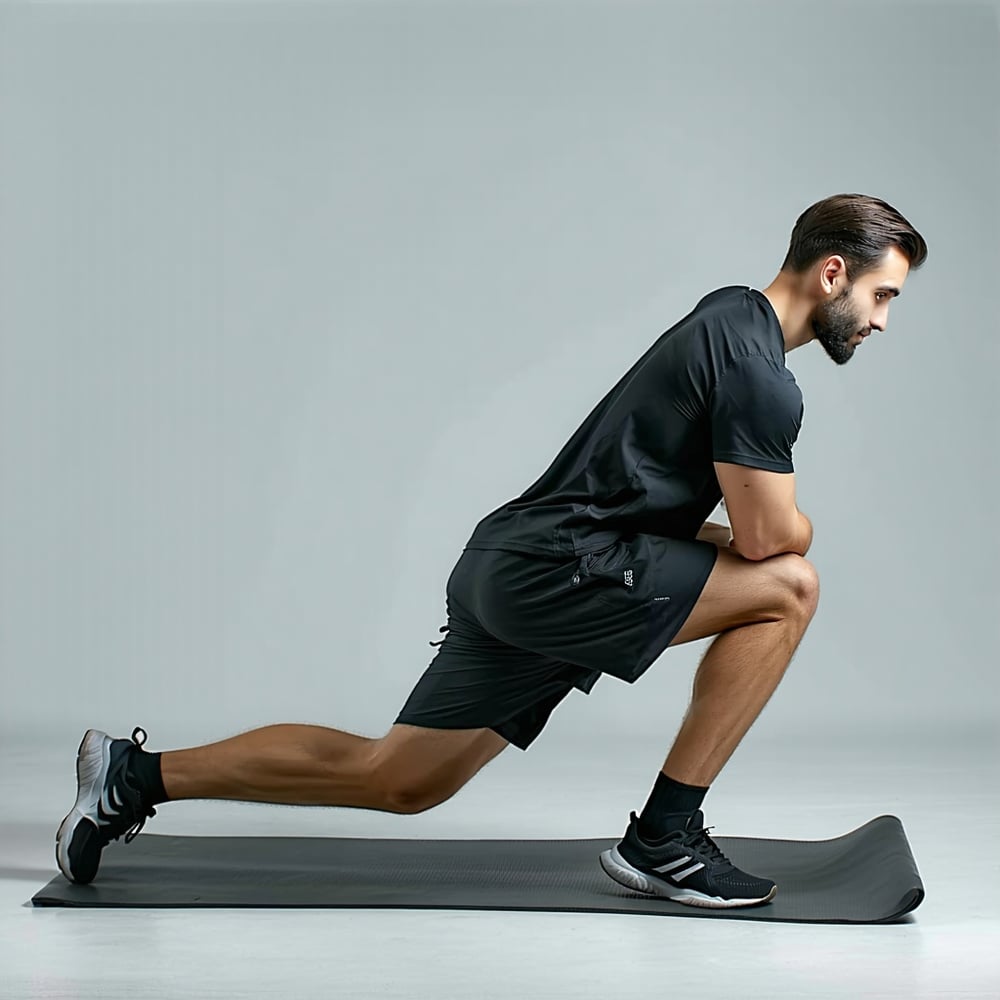THE MOVEMENT SYSTEMS THAT KEEP YOU ATHLETIC
fitness Mindset Jun 19, 2025 12:45:38 AM Kyle Receno 7 min read

How to Train Smarter, Move Better, and Stay Explosive After 30
If you’re over 30 and still training like an athlete, here’s the truth:
You can still be strong, powerful, and mobile — but only if you understand how the body moves as a system.
This phase of life isn’t about slowing down. It’s about getting smarter.
It’s about preserving and restoring the qualities that made you athletic in the first place — so you don’t lose them to time, injury, or inactivity.
In this article, you’ll learn:
- How the human body functions as a movement system
- Which movement qualities decline first after 30
- How to assess and intentionally train them
- Why this is your key to athletic longevity
🧠 What Does “Movement System” Actually Mean?
The body isn’t just muscles and joints — it’s an integrated system.
When we say “movement system,” we’re talking about how your:
- Brain
- Nervous system
- Muscular system
- Joints
- Fascia
- Breathing patterns
…all work together to create motion.
When these systems are coordinated, you move efficiently, powerfully, and pain-free.
When they’re misaligned, you move with compensation, stiffness, and higher injury risk.
⏳ What Declines First After 30 — and Why
Athletes over 30 often notice:
- Slower recovery
- More tightness
- Loss of power
- A shorter stride
- Increased joint discomfort
That’s not just aging — it’s neglected movement qualities.
The first things to go:
- Mobility (joint range & tissue extensibility)
- Elasticity (bounce, spring, reactivity)
- Rotational control (spinal and hip rotation)
- Contralateral coordination (left/right side syncing)
Strength might stay high. But if these movement patterns decline, your athleticism suffers — and your injury risk rises.
🔍 Key Movement Qualities to Preserve and Train
Let’s break down the systems and qualities that matter most — and how to train them intentionally.
1. Mobility & Joint Health (Structural System)
Why it matters:
Mobility keeps your joints healthy, your stride long, and your spine resilient. Without it, your body compensates — usually at the knees and lower back.
Train it with:
- Controlled Articular Rotations (CARs)
- End-range isometrics (e.g., hip capsule openers)
- Weighted mobility (e.g., goblet squat hold)
📌 Example: Spend 5–10 minutes daily on hips, T-spine, and ankles. These areas are the “bottlenecks” for most athletic movements.
2. Rotational Capacity (Transverse Plane System)
Why it matters:
Throwing, sprinting, swinging — it all happens in rotation.
Most gym training is sagittal (forward/back), but real athleticism requires rotation.
Train it with:
- Medicine ball throws (side, scoop, overhead)
- Cable rotations (paloff presses, chops)
- Landmine anti-rotation presses
- Crawling patterns (to retrain coordination)
📌 Example: Add rotational medball throws once per week before lifting — it enhances nervous system priming.
3. Elasticity & Plyometric Ability (Neuromuscular System)
Why it matters:
As we age, our tendons and fascia lose stiffness — and so does our speed.
Training elasticity helps maintain spring, reaction time, and athletic economy.
Train it with:
- Jump rope
- Low-level hops (pogo jumps, line hops)
- Depth drops (emphasizing landing quality)
- Sprint drills (A-skips, bounding)
📌 Example: 2–3 sets of low-amplitude hops in your warm-up can preserve tendon elasticity and foot/ankle health.
4. Gait & Coordination (Locomotion System)
Why it matters:
Walking, running, and sprinting involve precise left/right timing and core stabilization. Most athletes lose this balance through desk posture or bilateral training.
Train it with:
- Loaded carries (unilateral and contralateral)
- Cross-crawl exercises (bear crawl, dead bug)
- Rucking or incline walking
- Single-leg strength work (step-ups, skaters)
📌 Example: Swap one bilateral squat day for a single-leg day — it improves coordination and reduces asymmetries.
5. Breathing Mechanics (Diaphragmatic System)
Why it matters:
Your breath controls your nervous system, core stability, and endurance. Poor breathing leads to tightness, fatigue, and poor bracing.
Train it with:
- 90/90 breathing drills (on the wall)
- Breathing ladders (inhale/exhale cadence post-set)
- Zone 2 cardio for aerobic efficiency
- Breath holds to build CO₂ tolerance
📌 Example: Start your session with 2 minutes of diaphragmatic breathing. It resets posture, core tone, and focus.
🧭 How to Identify Movement Gaps in Your Body
A systemized athlete checks their movement like a mechanic checks a car.
Try this mini-assessment (monthly):
- Can you sit in a deep squat for 60 seconds?
- Can you rotate your spine without your hips moving?
- Can you jump and land quietly?
- Can you hold a 1-arm carry for 30 seconds per side?
- Can you breathe fully into your belly, ribs, and back?
Wherever the answer is “no,” that’s a system you need to restore.
🔁 Longevity = Restoring Before Rebuilding
You don’t need to stop training hard.
But you do need to start training smarter.
Preserve your movement.
Respect your systems.
And recognize that strength only matters if your body knows how to express it — cleanly, powerfully, and pain-free.
The athletes who stay in the game longest aren't the ones who go the hardest — they're the ones who stay the most functional.
🧠 Final Thought: Athleticism is a System — Not Just a Skill
Being athletic at 30, 40, 50+ isn’t about doing what you did at 20.
It’s about understanding what makes movement work — and building training around that.
This is your blueprint to stay fast, mobile, and explosive — not just for now, but for life.
Because the real goal isn’t just to lift more.
It’s to move better. To live stronger. To never stop playing.
